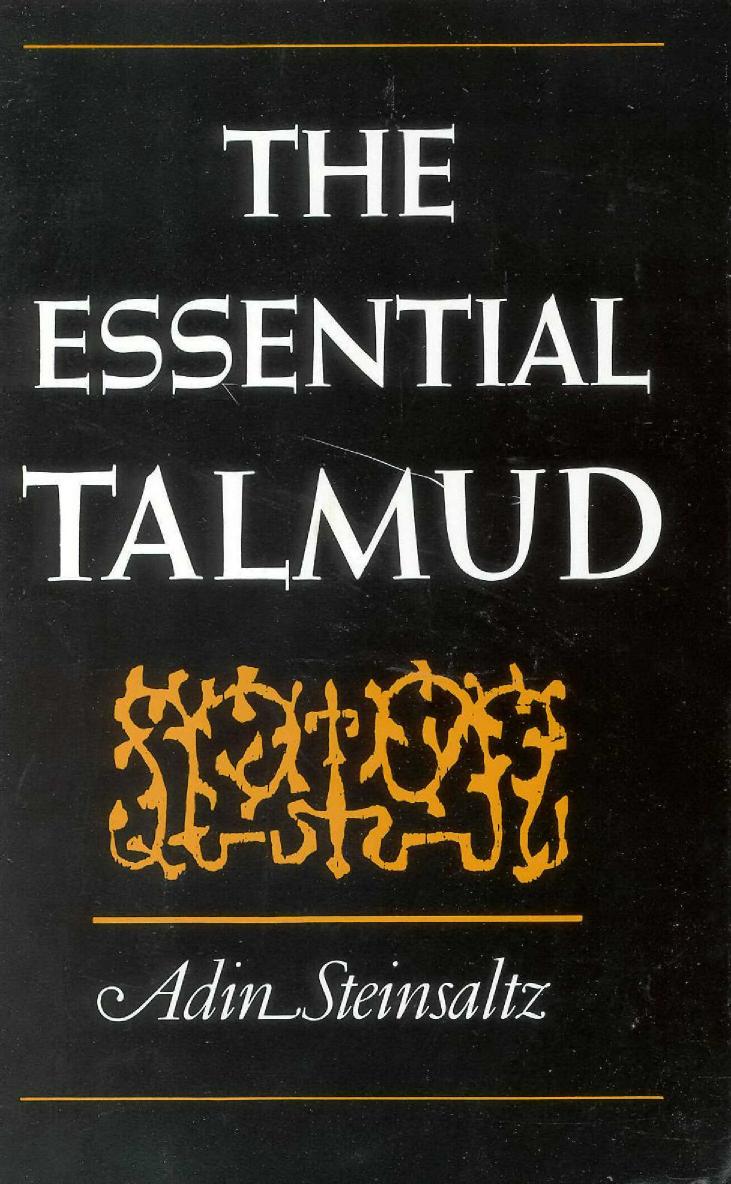The Essential Talmud by Adin Steinsaltz

Author:Adin Steinsaltz [ADIN STEINSALTZ]
Language: eng
Format: epub, pdf
Publisher: Basic Books
Published: 2012-01-01T16:00:00+00:00
19
Marriage and Divorce
THE RANGE OF PROBLEMS pertaining to Jewish matrimonial law can be divided, as far as sources are concerned, into two categories: the various incest laws and the prohibition of intercourse, and the regular laws of marriage and divorce. Whereas the Torah goes into great detail on the first subject, from the commandment “Thou shalt not commit adultery” to the list of strict interdicts in the book of Leviticus and the additions in Deuteronomy, it almost never refers to permissible marital conduct. From the many injunctions relating to violation of matrimonial laws, we infer that such legislation did in fact exist, but its essence is implied rather than elaborated in the Torah itself. The great structure of halakhah on marriage and divorce was based on the tradition of many generations and on the conclusions drawn from the combination of these suggestions with the hints in the Torah and their comparison with other areas of halakhah.
From the Mishnah and the Talmud there emerges a very detailed and complicated but consistent network of matrimonial law. There are two facets to marriage in Judaism: the relationship between a man and a woman, and the attitude of others toward them. Where the couple is concerned, the act of marriage almost totally lacks sanctity and is essentially a mutual agreement between two people to live together as a family and undertake to respect the obligations of a marriage contract. Since the act is not a sacrament, there is no need for priestly or rabbinical sanction. Talmudic law establishes that when a man and woman decide to wed, the man need only say to the woman, in the presence of two witnesses (who establish the legality of the occasion not through testimony but as part of the essence of the ceremony), that she has now become his wife through one of the accepted forms of marriage—symbolic handing over of money, written guarantee, or sexual intercourse. When the act takes place with the concurrence of both parties, a marriage has occurred. There are two stages to the legal procedure. In the first stage there is betrothal, which has all the validity of marriage but does not bestow rights. Subsequently, in the presence of ten adult males, the man brings the woman into his home; for this purpose, the huppah (canopy) is erected as a symbolic home to enable the ceremony to be held in any chosen location. She then becomes his wife. When the proceedings are conducted in accepted fashion, certain benedictions are recited during the betrothal and marriage ceremonies, but, basically, marriage is an act of legal-civil nature. The Jewish custom of inviting a rabbi to conduct the marriage ceremony dates from the late Middle Ages and is partly an imitation of the Christian ceremony, with no religious significance. Therefore, although there is moral (and, to some extent, halakhic) condemnation of sexual relations outside marriage, it has no bearing on the children born of such a relationship, whose legal status is not dependent on whether their parents were married.
Download
This site does not store any files on its server. We only index and link to content provided by other sites. Please contact the content providers to delete copyright contents if any and email us, we'll remove relevant links or contents immediately.
| Hebrew Bible (Old Testament) | Talmud |
| Torah | Zohar |
Man's Search for Meaning by Viktor E. Frankl(2262)
The Secret Power of Speaking God's Word by Joyce Meyer(2255)
Mckeown, Greg - Essentialism: The Disciplined Pursuit of Less by Mckeown Greg(2115)
MOSES THE EGYPTIAN by Jan Assmann(1977)
Unbound by Arlene Stein(1944)
Devil, The by Almond Philip C(1905)
The Complete Dead Sea Scrolls in English (7th Edition) (Penguin Classics) by Geza Vermes(1845)
I Capture the Castle by Dodie Smith(1575)
Schindler's Ark by Thomas Keneally(1516)
The Invisible Wall by Harry Bernstein(1462)
The Gnostic Gospel of St. Thomas by Tau Malachi(1414)
The Bible Doesn't Say That by Dr. Joel M. Hoffman(1373)
The Secret Doctrine of the Kabbalah by Leonora Leet(1270)
The Jewish State by Theodor Herzl(1254)
The Book of Separation by Tova Mirvis(1226)
A History of the Jews by Max I. Dimont(1211)
The Dead Sea Scrolls Bible by Martin G. Abegg(1203)
Political Theology by Carl Schmitt(1189)
Oy!: The Ultimate Book of Jewish Jokes by David Minkoff(1106)
